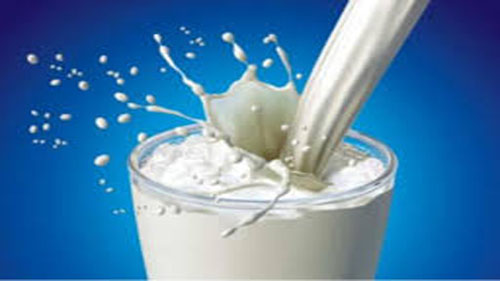Tips for Preservation of Milk

Milk is a highly perishable food item. If left alone, milk is fermented or putrefied rapidly by micro-organisms especially bacteria. Various methods like boiling, pasteurization, sterilization, etc are used to preserve milk for a longer period.
Boiling
Milk contains 87 percent water, 4 percent proteins, and 5 percent lactose (milk sugar). When we boil milk, the fat, sugar, proteins, and minerals get separated. Since they are lighter than milk they collect on the surface in the form of a cream.
During heating, some amount of water gets converted into vapor and the bubbles of water vapor rise to the top but the heat is conducted away by the layer of water and by the fat droplets that have a higher boiling point than water. The vapor gets trapped in the creamy upper layer. As the milk is heated further the water vapor expands and thick foam is produced on the top.
As the milk is boiled continuously in the water, which boils at 100 degrees Centigrade, produces more water vapor, and pressure builds up in the boiling milk so that the vapor pressure raises the creamy layer. So the milk pushes the creamy layer out and milk spills out.
Condensed milk and Fermentation
Fermented milk whole or skim milk curdled to a beverage or custardlike consistency by lactic-acid-producing microorganisms. Many forms of fermented milk were used by early nomadic herders, especially in Asia and S and E Europe, Scandinavia, Africa, and South America. Such milk is believed to have medicinal value in the control of intestinal fermentation by contributing bacteria that aid in digestion.
Fermented milk includes acidophilus milk; cultured buttermilk; kumiss (koumiss), probably originated from mare’s milk by western Mongols, effervescent and of acrid flavor and containing alcohol produced by yeasts; the similar kefir of Central Asia; yogurt, similar to the Armenian matzoon; and the Scandinavian beverages, kaeldermaelk, and filbunke.
Drying of milk
This is Drying milk and reducing it to a powdered concentrate. It can be found in two forms, regular and instant. They are both made from milk in a spray-drying process, but the instant variety has been given further processing to make it more easily soluble in water than regular dry milk. Both types have the same nutrient composition. The regular variety is more compact and requires less storage space than the instant variety, but it is more difficult to reconstitute.
The most easily found variety is the instant, available in nearly any grocery store. The regular variety has to be sought out from baking and restaurant suppliers and storage food dealers. There is a retail brand by the name of “Milkman” that has a bit of fat content that makes it similar to 1% milk. The fat content means it should be stored like whole milk,
Pasteurization
Along with correct cooling, pasteurization is one of the most important safety measures in milk processing. Pasteurization is a heat treatment that destroys unwanted or disease-causing bacteria without reducing the nutritional quality of milk. If carried out correctly, pasteurization will ensure milk quality and longer shelf life. All Pure milk is pasteurized.
Pasteurization temperature and time are the two most important factors which must be specified precisely in relation to the quality of the milk and its shelf life requirements. For example, High-Temperature Short Time (HTST) pasteurized milk is usually heated at 72°C – 75°C for 27 seconds. While pasteurization kills harmful bacteria in milk, as soon as you open a milk container at home, new bacteria are introduced to the milk. Eventually, these will grow large enough in number to cause the milk to go ‘off’.
Sterilization
A process for high-temperature sterilization of products such as milk and the like comprises the steps of directly injecting steam into the product for heating it to a lower temperature than the sterilization temperature, making the product stand for a definite period of time, making the product pass into an infuser to further heat it to the sterilization temperature, keeping it to this temperature for a predetermined period of time, admitting the product to a vacuum chamber for sudden cooling of same. It kills all micro-organisms and spores. The main disadvantages are the vitamin content is reduced as well as the biological value of protein becomes low.
Suggested Read: Health Benefits of Drinking milk
